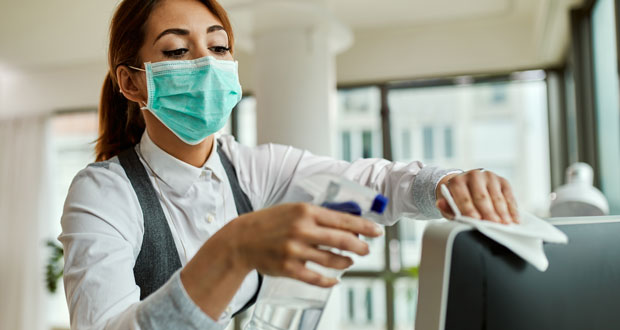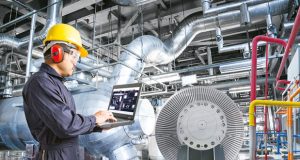 Dominic Folliss of Churchill describes a science-led approach that explores best practice hygiene processes, something of particular relevance for flexible workspaces
Dominic Folliss of Churchill describes a science-led approach that explores best practice hygiene processes, something of particular relevance for flexible workspaces
It seems that every week there is a new report about the future of the workplace, veering from a full return to the office to predictions that remote working will become the norm. The truth probably lies somewhere in between as companies find a solution that suits them, which is often a hybrid arrangement. As such, flexible offices will have a big part to play in the years ahead.
I recently held a webinar with the Flexible Space Association (FlexSA) to discuss FM trends and tools. It’s a competitive space and operators need to create workplaces that offer more than the home or local coffee shop if they are to attract businesses.
Technology can help these spaces to automate processes, improve the user experience, provide valuable data and assist with smarter space optimisation. The emergence of AI is helping to identify trends, predict future scenarios and offer possible solutions. It’s critical to purchase and implement tech in a strategic way with a clear view of the business objectives that it will support.
Consider five of the core FM functions – cleaning, security, waste management, guest services and the user experience. Occupancy sensors can provide data that will inform space management, and therefore the user experience, but can also be used by cleaning teams so they can allocate their resources more efficiently.
Similarly, visitor management systems can be adopted by guest services so that teams can spend more time on other valuable tasks, while security teams benefit from these systems for the same reason.
HYGIENIC WORKPLACES
Above all else, whatever the size and type of workplace, hygiene remains the top priority. Organisations have a duty of care to their employees and those employees have a higher expectation than ever about the level of hygiene in the workplace.
We have launched a white paper on the topic that is relevant to all FMs, property managers and flexible space operators. The backbone of this paper was a science-led study that explored two key components of workplace hygiene – the presence of harmful microorganisms (pathogens) on surfaces or in the air, and the indoor air quality.
Pathogens are easily transmitted through the air, via surfaces or direct contact such as a handshake. While we hope we don’t have another COVID situation anytime soon, colds and viruses can still cause a lot of illness, which leads to lower productivity.
It is particularly important for FM professionals to understand the bacteria and viruses that are present in their buildings. If they are able to identify potential risks, they can take proactive measures to mitigate them.
TVC SWABBING
Total Viable Count (TVC) swabbing tests the level of bacteria present on a surface. An effective TVC swabbing programme can identify areas of higher contamination, which gives cleaning operatives data-backed insight into the areas that require more attention. Common areas with a higher TVC count include door handles, lift buttons, bathroom doors and fridges. This varies by workplace and the beauty of a science-backed approach is that you are removing all the guess work from your cleaning regime. Cleaning schedules can be adapted as needed and operatives can focus on where they are needed the most.
INDOOR AIR QUALITY
The two environmental parameters that are most likely to have the biggest impact on microbiological contamination are temperature and relative humidity. Controlling these is all about balancing the risk of transmission with the comfort of occupants.
We partnered with AirRated, a company that provides certifications for Indoor Air Quality (IAQ), to conduct a Proof of Concept trial that explored a possible link between levels of microbial contamination and poor IAQ conditions. This was conducted at a Legal & General Investment Management shared office space with a capacity of 1,000 occupants.
The research identified that both relative humidity and temperature had an impact on the growth of airborne microorganisms and surface contamination. Using our workplace hygiene tool PRISM, we were able to analyse the data to identify “hot spots” so that state of the art technology and enhanced hygiene programs can be installed to minimise the hazard.
HYGIENE AS A TOP PRIORITY
The importance of hygiene extends beyond the fundamentals of protecting the health of building occupants. Poor hygiene can impact business reputation, stifle productivity and even make it harder to attract and retain talent.
A science-led approach is imperative because businesses can make informed decisions about cleaning protocols and demonstrate the impact to their employees with hard data. A commitment to prioritising health and wellbeing will not only protect employees and building users, but will contribute to the long-term success and resilience of the business.





